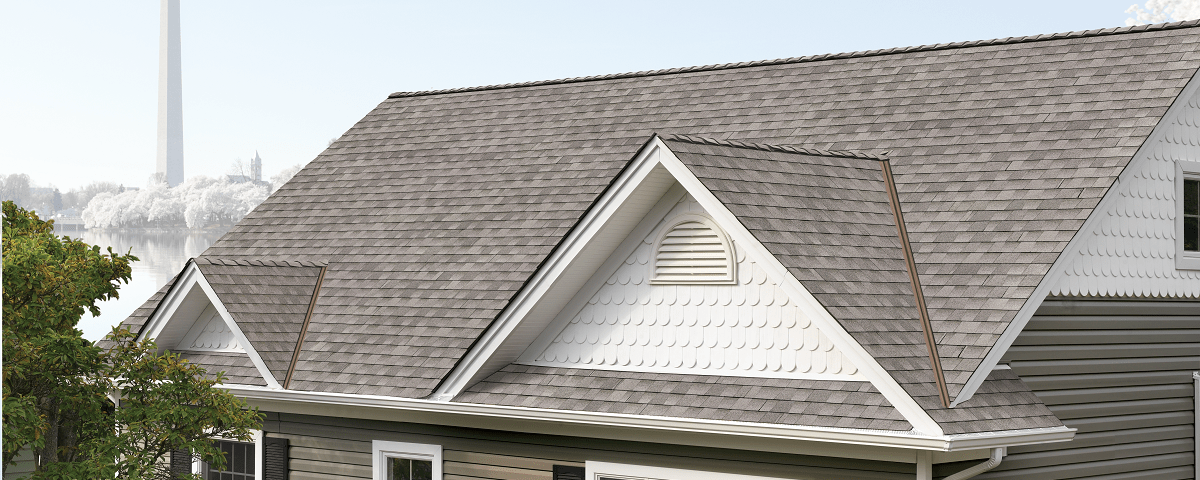Asphalt shingles are one of the most popular roofing materials for homes across the U.S., celebrated for their durability, affordability, and versatility. If you’re a homeowner considering asphalt shingles for your roof, you’re in the right place. In The Ultimate Guide to Asphalt Shingles: Everything You Need to Know, we’ll cover the basics, explore types, and discuss installation and maintenance tips to help you make the best decision for your home.
What Are Asphalt Shingles?
Asphalt shingles are roofing materials made from a fibreglass or organic mat, layered with asphalt for water resistance and topped with mineral granules for durability and appearance. They’re lightweight, cost-effective, and available in a range of colours and textures, making them a popular choice for residential roofs.
Why Choose Asphalt Shingles?
If you’re wondering why asphalt shingles are such a popular roofing choice, here’s a quick rundown of the benefits that make them stand out:
- Affordability: Asphalt shingles are generally more affordable than other roofing options like metal or slate.
- Variety: Available in many colors, textures, and shapes, they can enhance any architectural style.
- Durability: With proper care, asphalt shingles can last anywhere from 15 to 30 years.
- Ease of Installation: Compared to other roofing materials, asphalt shingles are easier to install, saving on labour costs.
By choosing All Aspects Roofing & Construction, you can ensure your asphalt shingles are installed with precision and care, maximizing their lifespan.
Types of Asphalt Shingles
There are three main types of asphalt shingles: 3-tab shingles, architectural shingles, and premium shingles. Let’s dive into each one.
1. 3-Tab Shingles
3-tab shingles are the most basic type of asphalt shingle. They’re flat, lightweight, and have a uniform appearance. Known for their affordability, 3-tab shingles are an excellent choice if you’re on a budget. However, they may not be as durable as other options.
2. Architectural Shingles
Architectural shingles (also known as dimensional shingles) are thicker and have a layered appearance that resembles wood shakes or slate tiles. They’re more durable and offer better resistance to high winds. Their layered look can add significant curb appeal to your home.
3. Premium Shingles
Premium shingles are high-end asphalt shingles designed to mimic more expensive materials like slate or wood shakes. They’re thicker, more durable, and offer exceptional aesthetics. Although premium shingles cost more, they’re a great choice for homeowners looking for luxury and durability in their roofing material.
Installation Process
If you choose to install asphalt shingles with All Aspects Roofing & Construction, here’s what the process typically looks like:
Step 1: Inspection and Preparation
Your roof is inspected, and any repairs are made to ensure a solid base for the shingles. Old shingles are removed, and the roof deck is checked for damages.
Step 2: Underlayment Installation
An underlayment is placed over the roof deck to protect against moisture and leaks. This is an essential layer that ensures added water resistance.
Step 3: Shingle Installation
Starting from the bottom edge, the shingles are placed row by row. Special attention is given to the placement and overlapping of shingles to ensure optimal durability.
Step 4: Finishing Touches
Edges and ridges are sealed, and flashing is added around chimneys, vents, and other roof structures to prevent leaks. Finally, a thorough inspection ensures that your new roof is both secure and visually appealing.
Maintenance Tips for Asphalt Shingles
Regular maintenance can extend the life of your asphalt shingles and prevent common issues like leaks or algae growth. Here are some simple tips to keep in mind:
- Inspect Regularly: Look for signs of damage, especially after storms. Missing or broken shingles should be replaced promptly.
- Clean the Roof: Debris, moss, and algae can accumulate on the roof over time. A gentle roof cleaning can help maintain the appearance and longevity of your shingles.
- Trim Overhanging Branches: Tree branches can rub against the shingles, causing damage or making it easier for algae to grow.
- Check the Attic Ventilation: Good ventilation helps prevent moisture buildup under the roof, which can lead to mold growth and shingle warping.
The Lifespan of Asphalt Shingles
The lifespan of asphalt shingles can vary based on the type you choose and the maintenance you perform. Here’s a quick estimate of what to expect:
- 3-Tab Shingles: 15–20 years
- Architectural Shingles: 20–30 years
- Premium Shingles: Up to 40 years
By hiring All Aspects Roofing & Construction, you can help ensure that your shingles last as long as possible, thanks to professional installation and quality materials.
Common Issues with Asphalt Shingles
While asphalt shingles are durable, they’re not without their potential issues. Here are some common problems and how to address them:
- Curling or Buckling: Caused by improper ventilation or aging. Curling shingles may need to be replaced.
- Missing Granules: Over time, granules can wear off, reducing the shingles’ effectiveness. Regular roof inspections can help catch this issue early.
- Algae and Moss Growth: Particularly in humid climates, algae can grow on shingles. Installing algae-resistant shingles or periodic cleaning can prevent this problem.
Cost of Asphalt Shingles
One of the main advantages of asphalt shingles is their affordability. While costs can vary based on location, roof size, and shingle type, asphalt shingles typically cost between $2 to $5 per square foot. Architectural shingles and premium options will be more expensive but offer added durability and appeal.
FAQs
Q: How often should I replace my asphalt shingle roof?
The lifespan of asphalt shingles can range from 15 to 40 years, depending on the type. Regular maintenance and inspections can help extend the life of your shingles.
Q: Can I install asphalt shingles myself?
While DIY installation is possible, hiring professionals like All Aspects Roofing & Construction ensures proper installation and maximizes the lifespan of your roof.




